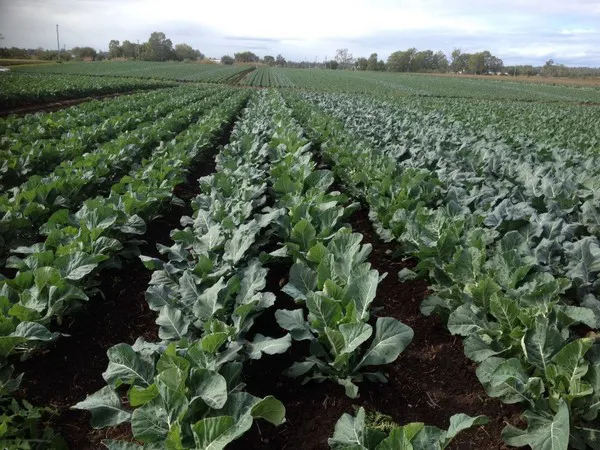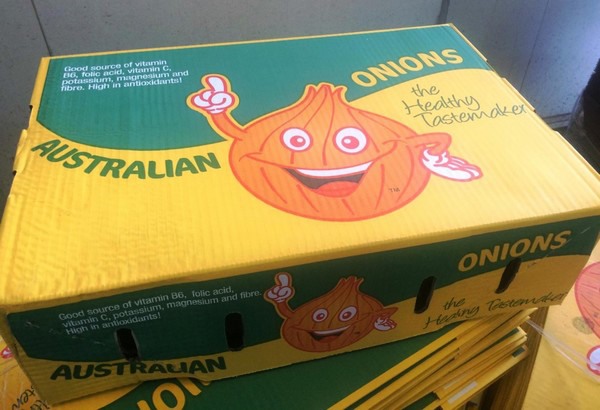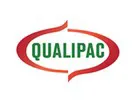The situation around lockdowns and restrictions in Australia is ever changing and with each individual state/territory responsible for its own restrictions it can be difficult to keep up with the changes. However growers are doing their best to keep supplying the domestic and overseas markets with fruit and vegetables.
Qualipac Farms, based in Queensland which has no lock down at the moment is in the midst of their broccoli and pumpkin production and supply window and preparations are being made for the upcoming new season Queensland onion season with harvest and supply anticipated to commence in October till the end of January.

“At Qualipac we have intensified our activities in developing long-term year-round mutual committed production and supply programs for Australian fresh produce between our fresh produce growers and our overseas customers,” said Kees Versteeg who is responsible for sales and business development at the company. “Such programs are developed with consultation amongst our overseas customers and our fresh produce growers, providing surety for fresh produce to be produced, packed and shipped meeting our customers’ weekly supply volumes, quality and packing requirements at steady, economical viable and profitable prices for the fresh produce growers and overseas customers. Such programs are providing surety of supply at prices not subjected to domestic and/or global supply and price volatilities in our endeavour to make everyone in our fresh produce supply chain a winner.”
Even though the majority of the growing regions in South East Queensland are technically still drought declared, Kees said that they have seen reasonably good growing conditions with some decent rainfalls that provided them with the confidence to pull through their fresh produce plantings to harvesting. Although due to delayed rainfall earlier in the season the start of the season was later than usual.
“The onion harvest in South East Queensland is anticipated to commence in October and is expected to run till the end of December with supply available from mid-October till mid or end of January in October – January. Covid-19 associated domestic and international travel restrictions and a high reliance on seasonal workers will definitely bring some challenges this season,” explains Kees.
“Covid-19 has also created a lot of havoc in the air and sea freight industry with higher than usual export related costs and subject to what the global market supply and demand for onions will do in upcoming months we might see the majority of our new season Queensland onions staying in the domestic market because firstly, we might not be able to compete with the global market on price or secondly, we might not have the required shipping containers and/or reliable shipping schedules for shipping our produce at competitive prices to the overseas markets. Overseas enquiries for our new season Queensland onions are already coming through and hopefully some of them will come to fruition … fingers crossed!”

The various lockdowns in Australia have a big influence on demand from retail during but the food service industry suffers as a result.
“For growers it will always be difficult to plan their crops, their harvest, handling, packing and shipping of these crops in such a manner that this process ends up being a profitable one … unless that process starts and finishes in consultation and agreement between the grower and the end customer by establishing prior to crop production mutual acceptable production and supply arrangements for supply to that same end customer at pre-determined and mutual agreed upon, economical viable and profitable prices for everyone in that supply chain. Covid-19 has introduced additional uncertainties to that process such as the imposed domestic and international travel restrictions reducing our pool of seasonal workers and hence creating a lot of harvest labour challenges. Our air and sea freight industry is severely affected with reduced cargo capacity and increased associated export related cost.”
Export
Australian growers’ cost for production, packing and shipping fresh produce is still one the highest in the world, and according to Kees Covid-19 has not done them any favours by further increasing that cost due to shortages in seasonal workers as well as increased air and sea shipping cost for exporting Australian fresh produce to overseas markets.
“Regrettably, export therefore has not gotten any easier in the last year and adding to that pain are the current global shortages in shipping containers and unreliable shipping schedules for vessels sailing in and out of Australia.”
“We’re experiencing a lot of disruptions with overseas market shutdowns when it starts affecting their fresh produce demand. To-date we managed this pretty well though by diverting fresh produce supply volumes to other overseas markets. Where there’s one overseas market reducing their demand there always seems to be another that is happy to take on some extra supply.
“Air freight capacity is available and to-date we’ve not experienced scenarios in which we were not able to secure air cargo space on international flights for freighting our fresh produce to our overseas markets. Fresh produce exports initially shifted from air to sea freight due to very steep air freight cost increases when Covid-19 presented itself to the world and sea freight at the time the most cost-effective option. Though more recently we’re experiencing a lot of disruptions in the sea freight industry with shortages in shipping containers, unreliable shipping schedules and shipping lines increasing their shipping rates. We now have these discussions with our overseas customers working out the air vs sea freight options available to us and what possibly will deliver us all the best outcome.”
There are still very few commercial passenger flights flying in and out of Australia though it seems the number of passenger and/or freight only planes flying in and out of Australia are sufficient is suffice to accommodate for fresh produce exports.
“I have not yet experienced or heard about any fresh produce air freight shipments that could not be flown out of Australia due to a lack of air cargo capacity,” said Kees.
Automation
“Even before Covid-19 presented itself to the world, automation had been on our agenda for a long time to improve our global competitiveness and attractiveness for overseas markets wanting to do business with Australia. Australia is ranked only 2nd after Luxembourg as the country with the highest minimum wages which brings along with it the constraints to be more globally competitive and attractive for overseas markets wanting to increase their business with Australia. Automation in my personal view is therefore of high importance and a valuable, economical answer in our endeavours as a country to reduce our cost of production.”
 Kees Versteeg
Kees Versteeg
Qualipac Pty Ltd
M: +61 (0)488 494 911 5209
E: Kees@qualipac.com.au
www.qualipac.com.au
